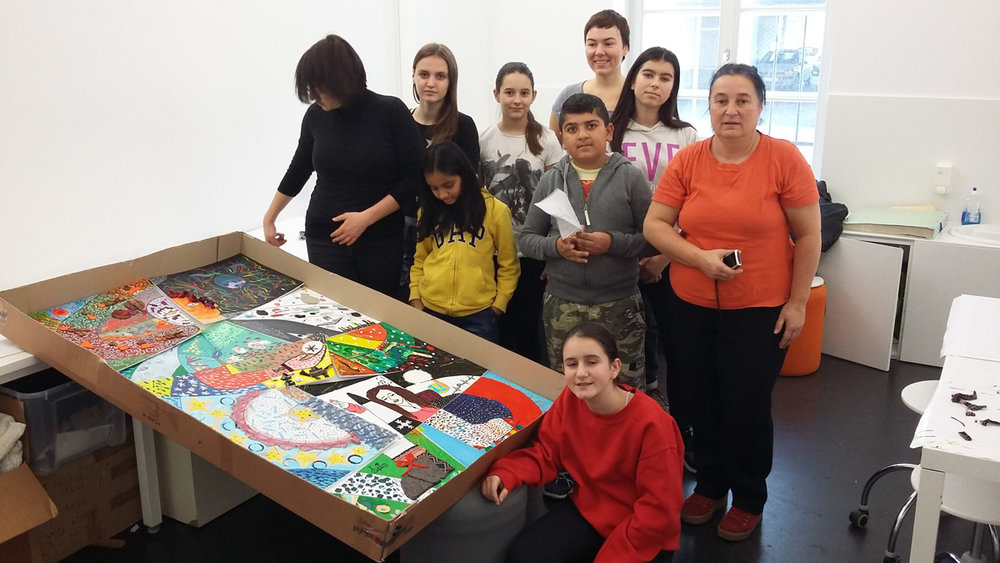
Social games | Workshop No. 2
15 December 2018, Museum of Contemporary Art Metelkova, +MSUM, Ljubljana. Moderna galerija has a long-term relationship with the Livada elementary school, the school with the highest percent of non-Slovene pupils in the country. The second workshop was focused on the creation of a gigantic puzzle, consisted of individual pieces, made by participants, who created spaces of their imagination. The materials they used were paint and textile.
Moderna galerija has a long-term relationship with the Livada elementary school, the school with the highest percent of non-Slovene pupils in the country. It is located in a suburban area to the south of Ljubljana called Rakova Jelša, where there used to be the largest unregulated settlement of migrants from Bosnia after the Balkan War in the 1990s. The majority of pupils in the school come from Bosnia, and most of them still do not speak Slovene well. The number of new pupils increased in the last year with the children of the asylum seekers from Syria, Iran, and Afghanistan, who live in the nearby asylum home in Vič.
Since there is such an ethnically diverse group of pupils, we will organise activities that can complement their regular school lessons. In the school as well as in our museum we will organise four workshops to create social games from all parts of the world, especially from the countries the pupils come from. Participating pupils will choose and create the games themselves, with the assistance of their teacher from the Livada elementary school Natalija Veselič Martinjak and the museum educators, Dana Terzić, Maruša Meglič, Anja Radovič, together with the architect and activist Tanja Završki. The working methodology stimulates co-learning instead of competition, creativity, spontaneity, self-confidence, a positive self-image, and persistence.
Saturday, 15 December 2018, Museum of Contemporary Art Metelkova, Ljubljana
The second workshop was focused on the creation of a gigantic puzzle, consisted of individual pieces, made by participants, who created spaces of their imagination. The materials they used were paint and textile. Photo: Adela Železnik



